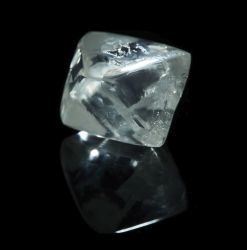Diamond exports from India, which polishes about 90% of the world’s rough diamonds, will collapse by as much as a quarter this year as the pandemic crushes demand and breaks supply chains.
Overseas sales of cut and polished diamonds may slump 20% to 25% in the year ending March from $18.66 billion last year, according to Colin Shah, chairman of the Gem & Jewellery Export Promotion Council. That will push exports to the lowest in data going back to the 2009 fiscal year on the association’s website.
“In 2008, things were bad for a quarter and business recovered after that,” Shah said in an interview. “This is now two quarters gone.” While festivals such as Diwali, Christmas and Valentine’s Day will prop up demand in the next six months, that won’t be enough to lift full-year exports, he said.
LOSING LUSTER
India imposed one of the world’s strictest lockdowns in March to contain the coronavirus outbreak. That brought activity to a halt and put the economy on course for its first annual contraction in more than four decades. With more than 7 million infections, the country is one of the world’s virus hot spots.
The measures to control the pandemic meant production centers were closed or operating at very low levels, and rough-diamond imports fell in line with poor end-product demand. The country’s diamond exports sank 37% to $5.5 billion in the six months through September from the year-earlier period.
Workers have now started returning to the diamond-polishing hubs of Surat, Mumbai and Kolkata, and factories are operating at 70% to 80% of capacity with social-distancing norms in place, Shah said. Still, it’s difficult to predict global supply chains as rules to control the virus change frequently, he said.
UNEVEN RECOVERY
The International Monetary Fund warned this week the world economy faces an uneven recovery until the virus is tamed. Chinese consumers are starting to spend again, while in Europe, the luxury sector is back near pre-pandemic levels despite a surge in Covid-19 cases that’s hurting normal tourism.
De Beers sold about $467 million of rough diamonds in its eighth sales cycle of 2020, Anglo American Plc said Wednesday. Sales improved compared with $334 million in the previous cycle, and $297 million during the same cycle in 2019.
“We continue to see a steady improvement in demand for rough diamonds in the eighth sales cycle of the year, with cutters and polishers increasing their purchases,” said Bruce Cleaver, chief executive officer of De Beers. “But these are still early days and there is a long way to go before we can be sure of a sustained recovery in trading conditions.”
Source: DCLA






